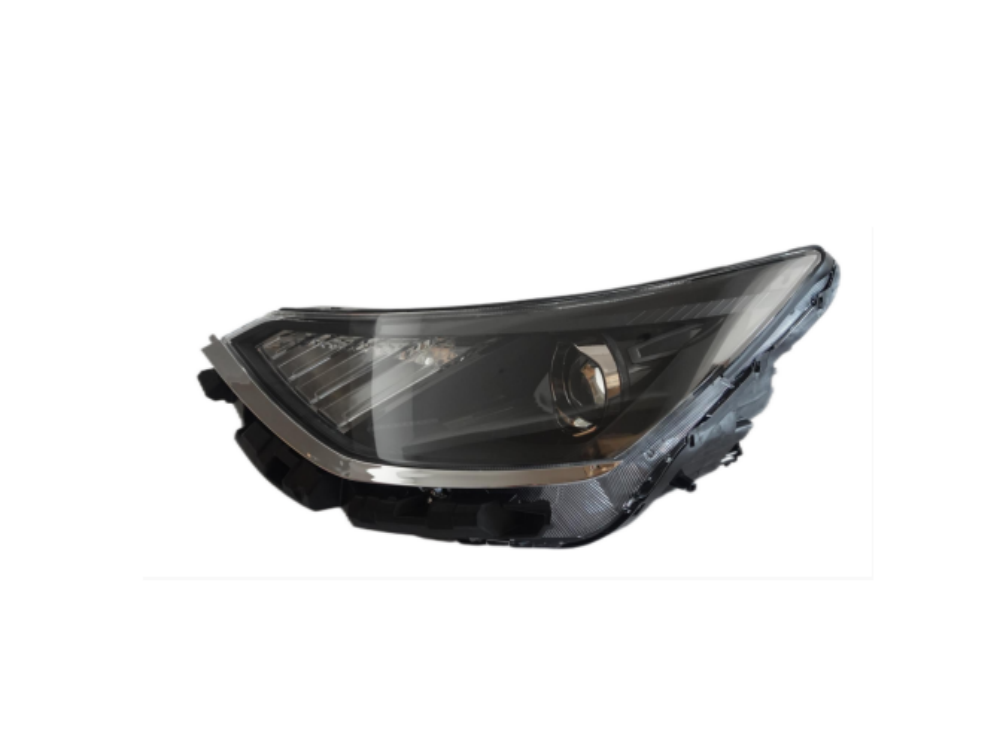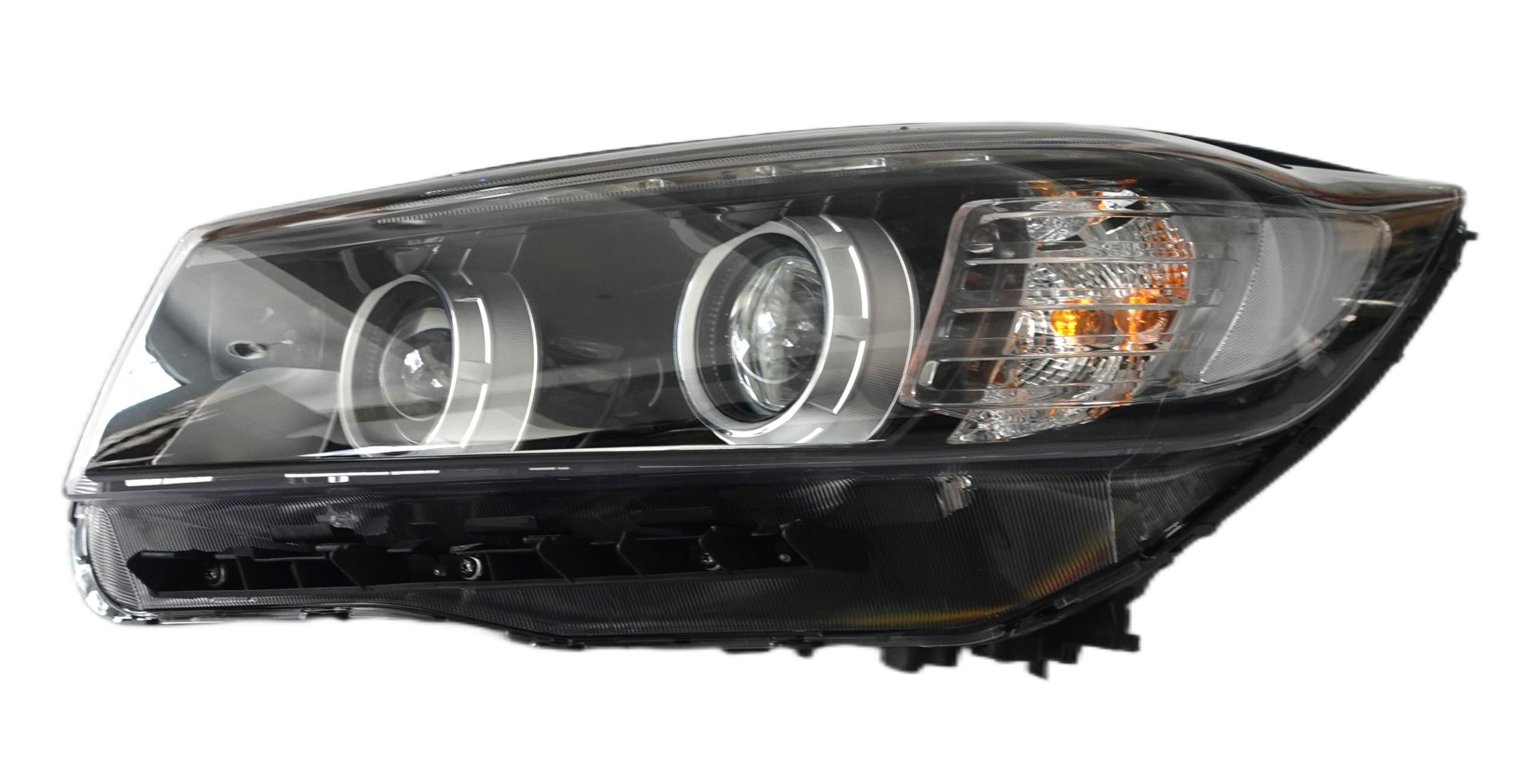Utvecklingen av fordonsbelysnings teknik
Modern bilbelysning har kommit långt ifrån de tidiga dagarna med acetylen- och oljelampor. Idag, LED-strålkastare representerar toppen av fordonsbelysningsteknik, vilket erbjuder oöverträffade fördelar för förare och tillverkare alike. Dessa avancerade belysningslösningar har revolutionerat hur vi tänker på fordonsäkerhet, effektivitet och design.
Eftersom biltekniken fortsätter att utvecklas har LED-strålkastare blivit det föredragna valet för både lyxbilar och standardmodeller. Deras överlägsna prestanda och mångsidighet gör dem till ett allt vanligare alternativ för nya fordon och eftermonterade uppgraderingar.

Kernfördelar med LED-strålkastarteknik
Förbättrad synlighet och säkerhetsfunktioner
LED-strålkastare ger bättre belysning jämfört med traditionella halogenlampor. Ljuset som produceras är klart, skarpt och mer fokuserat, vilket gör att förare kan se längre fram och snabbare identifiera potentiella faror. Strålkastarmönstret är mer exakt kontrollerat, vilket minskar bländning för motgående trafik samtidigt som siktavståndet framåt maximeras.
Dessa avancerade belysningssystem svarar också snabbare än konventionella lampor. När du aktiverar dina LED-strålkastare når de nästan omedelbart full ljusstyrka, vilket ger omedelbar belysning. Denna snabba responstid kan vara avgörande i nödsituationer där snabb synlighet är viktig.
Energieffektivitet och miljöpåverkan
En av de mest betydande fördelarna med LED-strålkastare är deras exceptionella energieffektivitet. De förbrukar betydligt mindre ström än traditionella halogen- eller xenonljus, vilket minskar belastningen på fordonets elsystem. Denna förbättrade effektivitet leder till bättre bränsleekonomi och minskade utsläpp, vilket gör LED-tekniken till ett miljömedvetet val.
Den minskade strömförbrukningen hos LED-strålkastare innebär också mindre påfrestning på fordonets batteri och generator. Detta kan bidra till bättre helhetsprestanda och potentiellt förlänga livslängden för dessa avgörande komponenter.
Hållbarhet och Underhållsfördelar
Förskjuten livstid och pålitlighet
LED-strålkastare har en imponerande driftslivslängd som långt överstiger traditionella belysningslösningar. Medan konventionella halogenlampor vanligtvis håller mellan 500 och 1 000 timmar kan LED-strålkastare fungera upp till 50 000 timmar eller mer. Denna exceptionella livslängd innebär att de flesta förare aldrig behöver byta sina LED-strålkastare under bilens livstid.
Den robusta konstruktionen av LED-strålkastare gör dem mycket motståndskraftiga mot stötar, vibrationer och extrema temperaturer. Till skillnad från traditionella glödlampor med känsliga glödtrådar är lysdioder halvledarkomponenter som kan tåla de hårda kraven under daglig körning utan att gå sönder.
Minsta underhållsbehov
Hållbarheten hos LED-strålkastare minskar direkt underhållskostnaderna och antalet servicebesök. Eftersom det nästan aldrig behövs att byta lampor kan fordonets ägare spara både tid och pengar på lång sikt. Denna tillförlitlighet är särskilt värdefull för flottoperatörer och kommersiella fordon där driftstopp kan vara kostsamt.
Dessutom levereras LED-strålkastare oftast med omfattande garantier, vilket ger trygghet och skydd mot eventuella fel. Denna extra säkerhet gör dem till en ännu mer attraktiv investering för fordonägare.
Design- och estetiska fördelar
Modern stilalternativ
LED-strålkastare ger konstruktörer större flexibilitet när det gäller att skapa distinkta fordonsskepnader. Deras kompakta storlek och mångsidiga konfigurationsalternativ möjliggör mer kreativa och aerodynamiska framdesigner. Många tillverkare använder idag LED-belysningssignaturer för att etablera varumärkesidentitet och differentiera sina fordon på marknaden.
Den skarpa, rena belysningen från LED-strålkastare bidrar också till ett mer premiumutseende. Färgtemperaturen hos LED-belysning liknar naturligt dagsljus mer, vilket ger fordonen en sofistikerad och modern utstrålning.
Anpassningsmöjligheter
Den anpassningsbara naturen hos LED-tekniken möjliggör avancerade funktioner som adaptiv belysning som kan justera strålkastarmönster baserat på körförhållanden. Vissa system kan automatiskt mörka specifika delar av strålen för att undvika att blända andra förare samtidigt som optimal siktbarhet bibehålls på andra områden.
Moderna LED-strålkastare kan också innehålla dynamiska blinkersignaler, välkomstbelysningssekvenser och andra avancerade funktioner som förbättrar både funktionalitet och visuell attraktivitet. Dessa funktioner lägger till värde på fordonen och förbättrar den totala körupplevelsen.
Framtida möjligheter och teknologiska framsteg
Integration med smarta system
Framtiden för LED-strålkastare ser allt ljusare ut eftersom tillverkare fortsätter att utveckla nya funktioner och möjligheter. Integration med fordonssensorer och artificiella intelligenssystem möjliggör smarta belysningssystem som kan förutse och automatiskt svara på föränderliga körförhållanden.
Avancerade förarstödsystem (ADAS) förbättras genom sofistikerad LED-strålkastarteknologi, vilket förbättrar säkerhetsfunktioner såsom automatisk styrning av helljus och prediktiv belysning i kurvor.
Nya tekniker
Forskning och utveckling inom LED-teknik fortsätter att ge förbättringar när det gäller effektivitet, ljusstyrka och kontrollmöjligheter. Nya material och tillverkningsprocesser gör att LED-strålkastare blir mer prisvärda samtidigt som deras prestanda utvidgas.
Integreringen av matris-LED-system och mikro-LED-teknik lovar ännu mer exakt kontroll över belysningsmönster och energiförbrukning, vilket pekar mot en spännande framtid för fordonsbelysningsteknik.
Vanliga frågor
Hur mycket längre håller LED-strålkastare jämfört med traditionella glödlampor?
LED-strålkastare håller vanligtvis 50 000 timmar eller mer, vilket är ungefär 50 gånger längre än traditionella halogenlampor. Denna förlängda livslängd innebär ofta att de håller längre än fordonet självt, vilket eliminerar behovet av regelbundna utbyggnader.
Är LED-strålkastare värt den högre initiala kostnaden?
Även om LED-strålkastare kan ha en högre initial kostnad, motiverar ofta deras långsiktiga fördelar investeringen. Tänk på faktorer som förbättrad säkerhet, lägre underhållskostnader, bättre energieffektivitet och ökat fordonsvärde när du bedömer den totala ägandekostnaden.
Kan LED-strålkastare eftermonteras på äldre fordon?
Många fordon kan uppgraderas med LED-strålkastare, men det är viktigt att välja komponenter som är korrekt utformade för din specifika fordonmodell. Professionell installation rekommenderas för att säkerställa korrekt justering, kompatibilitet och överensstämmelse med lokala föreskrifter.


